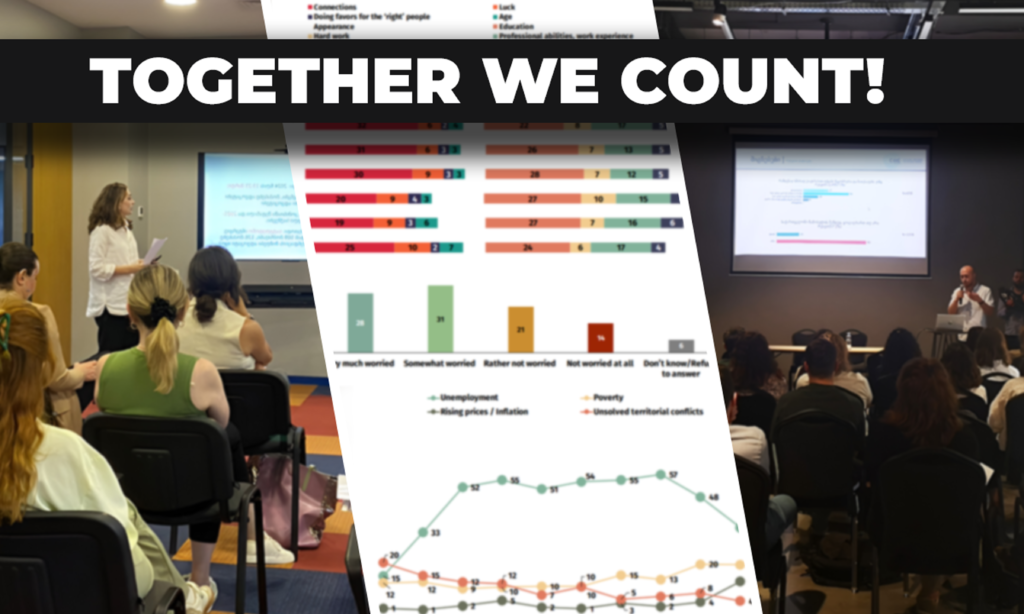Georgia’s state budget amounted to GEL 12.5 billion in 2018. The Ministry of Labor, Health and Social Affairs; Ministry of Regional Development and Infrastructure; and Ministry of Education and Science had the largest appropriations at 28.2% (GEL 3.528 billion), 14.5% (GEL 1.815 billion), and 9.5% (GEL 1.186 billion) of the budget, respectively. In the 2018 June CRRC/NDI survey, respondents were asked, “What are your top three priorities for spending, understanding it means cutting elsewhere?” Respondents were provided with a show card and allowed to name up to three answers. This blog post looks at whether responses match up with actual spending, and how priorities vary among different demographic groups.
Overall, healthcare was named most often, with 61% of the population reporting it was a priority, followed by education (55%) and pensions/social assistance (47%). No other issues were named nearly as frequently, with support for SMEs and infrastructure being the next most commonly named issues (reported to be priorities by 12% of the public).
People’s views on budget priorities and the current state budget correspond to each other. Healthcare and pensions/social assistance (which are under the Ministry of Labor) and education had the largest share of the budget in 2018. Georgia’s population thinks that these spheres should be budget priorities.
While priorities generally match up with appropriations, who prioritizes different realms of spending? The data suggests that compared to young people (18-35) those who are over the age of 36 are more likely to name healthcare, perhaps unsurprisingly since healthcare spending generally increases with age. Women are also significantly more likely to report healthcare than men. Interestingly, ethnic minorities are less likely to name healthcare as a budget priority. These results are supported by a logistic regression analysis, which found each variable to be a significant predictor of mentioning healthcare.
About half the population (55%) report that education is one of their top three priorities. The data suggest people with tertiary education are more likely to name education as a priority for the state budget than people who have a lower level of education. Age also matters. People between the ages of 18-55 are more likely to name education as a top priority than those who are above 55. People who live in rural areas and ethnic minorities are less likely to name education as a top priority. A logistic regression analysis supports these results.
People 56 years old or more are more likely to name pensions and social assistance as a state budget priority than younger people. Compared to men, women tend to mention pensions and social assistance as a priority. People who think the economic situation is good in the country are less likely to name pensions and social assistance in their top three priorities for the budget. Interestingly, those who live in rural area are also less likely to mention pensions/social assistance as a budget priority. These results are also supported by a logistic regression analysis.
The above data leads to two conclusions. First, the state budget largely matches up with people’s spending priorities. Second, priorities vary significantly between age groups, settlement types, sexes, and ethnicities.
To look into the data on the issue further, visit CRRC/NDI survey results and visit our Online Data Analysis portal.







